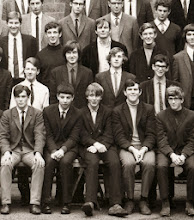
 Towards the end of True North there's a section on the numinous nature of the region's wild landscape. Religious or not, visitors are seldom unmoved by landscapes such as Lindisfarne, or Holy Island, and shrines such as the little chapel of the 'Four Cs', saints Cedd, Chad, Caewlin and Cynebil, at Lastingham. One regular walker is the rock musician Julian Cope (The Teardrop Explodes, Brain Donor et al) who is greatly interested in other rocks - the mysterious monoliths and stone circles left by our ancestors in the distant past.
Towards the end of True North there's a section on the numinous nature of the region's wild landscape. Religious or not, visitors are seldom unmoved by landscapes such as Lindisfarne, or Holy Island, and shrines such as the little chapel of the 'Four Cs', saints Cedd, Chad, Caewlin and Cynebil, at Lastingham. One regular walker is the rock musician Julian Cope (The Teardrop Explodes, Brain Donor et al) who is greatly interested in other rocks - the mysterious monoliths and stone circles left by our ancestors in the distant past.Penny and I, and a group of friends from my old Bradford Telegraph & Argus days, discovered the excellent circles and other remains above Boot on a week's walking holiday at the end of last month. Take the path through Eskdale Mill (run by a delightful family and still grinding flour with its two huge waterwheels), climb the fellside through an abandoned group of farm buildings and loop gently to the left. At least three circles lie in the tawny grass with views of Harter Fell one way (above) and the Scafells another. Certainly a numinous place.

Cope doesn't describe these ones but he has a good selection from the North in The Modern Antiquarian, (Thorson's 2000), including some in places since disturbed by modern man, such as fields by the M6 at Shap. The book's only disadvantage is its vast size, a monolith in itself and impractical to take on walks.




















